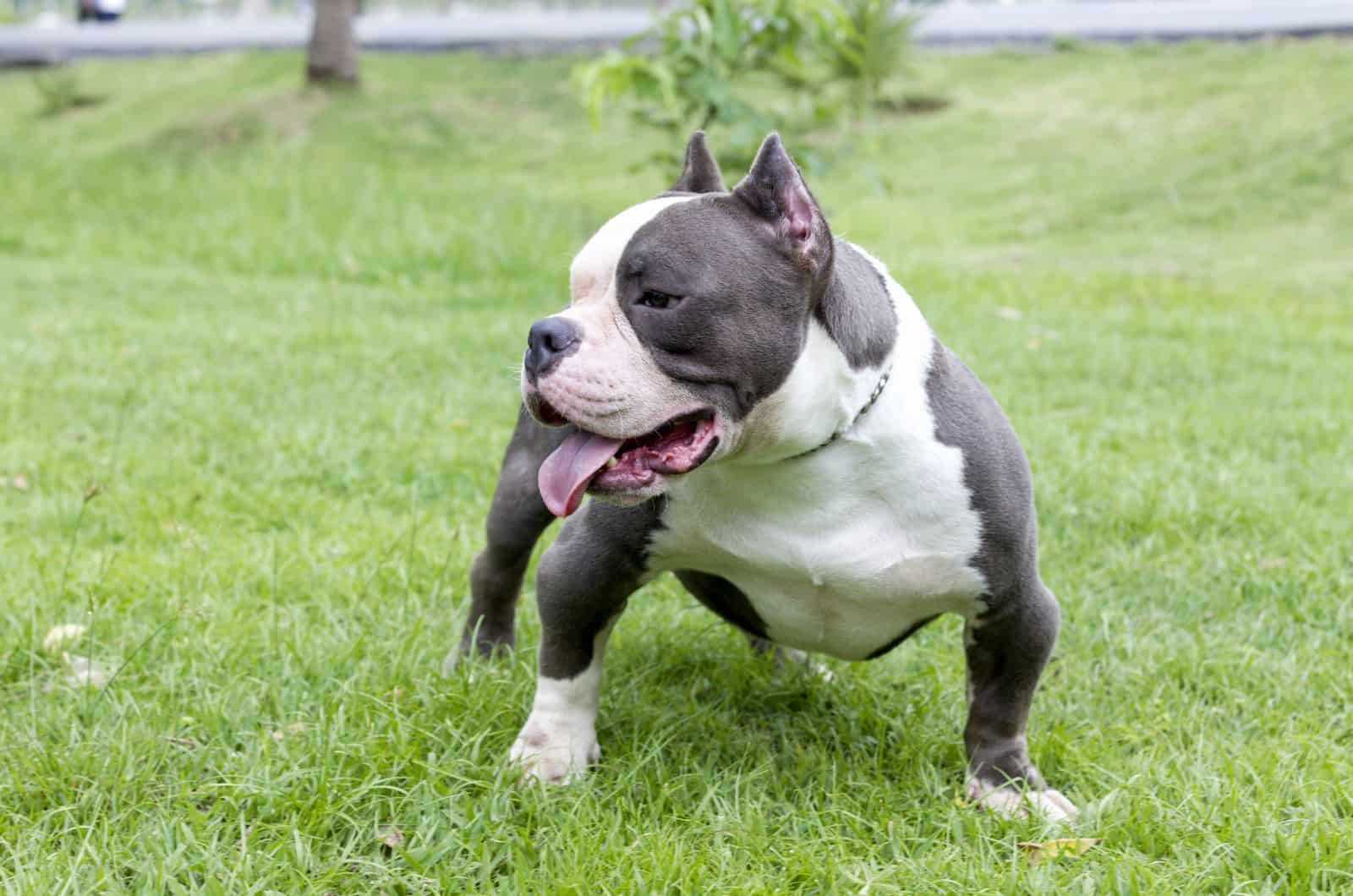If you are looking for one of the friendliest dog breeds, and as such, a great family dog, the razor edge pitbull is right for you! These incredible pitties look rough, but they have a heart of gold. Their friendly and at ease nature makes them fantastic pets.
But, how and where did it all start?
Origins Of Razor Edge Pitbull
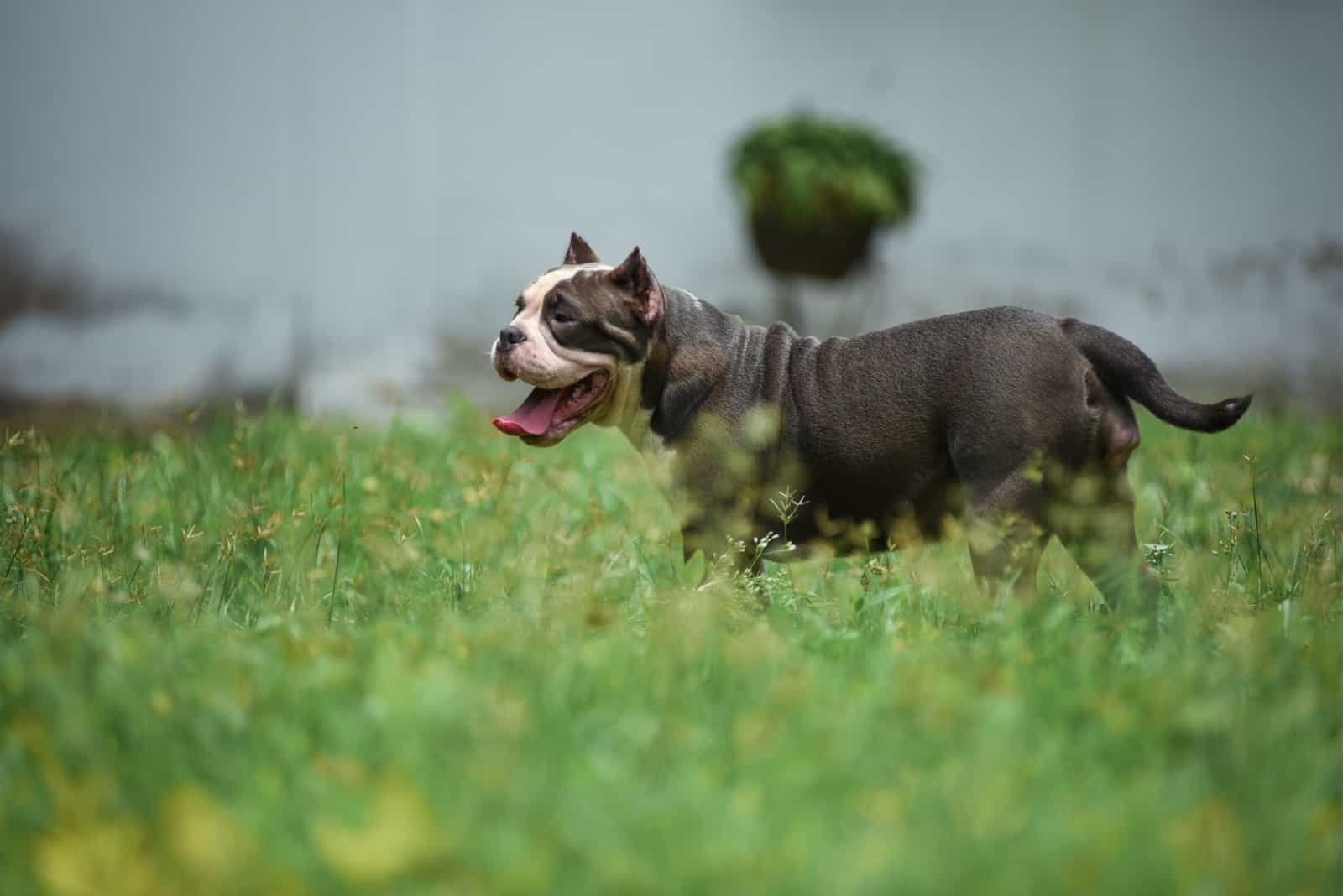
The razor edge pitbull is of mixed heritage. Dave Wilson and Carlos Barksdale created this type of pitbull bloodline in the 1980s in order to get a more family-oriented dog breed. The name comes from the name of their kennel – Razor Edge.
Apart from wanting a more friendly dog, another reason for creating this bloodline was to keep the appearance of a pitbull but with larger body and head proportions.
The dog breeds they used in crossbreeding are the American pitbull terrier, mastiff, and the English bulldog. It is possible that some other dog breeds were included. E.g. the American Staffordshire terrier.
By adding mastiff genes into the gene pool, the razor edge pitbull has a larger head, and the English bulldog gave it a broader chest.
Mixing those two dog breeds with a purebred American pitbull terrier gave a final result: a bulky figure, thick, strong neck, and a square muzzle.
They got a sturdy pitbull breed but with family dog traits.
Both Dave Wilson and Carlos Barksdale traveled across the east American coast visiting different pitbull breeders in order to find a perfect pitbull dog. They eventually found some of the best game dogs of that time.
This was all before the internet, so their search and breed mixing spanned over years.
And, it was quite expensive, with rumors that they paid more than 3500 dollars for a descendant of a famous game dog of the Mayfield Pitbull line.
Luckily, in the end, the razor edge pitbull was created with all its lovely characteristics.
Do you have the razor edge pitbull?
The Appearance Of Razor Edge Pitbull
Even though they are a mixed breed, they have distinctive characteristics that are passed down to the next generations without a lot of variations. But, because of the mixing, they are not recognized by AKC ( the American Kennel Club ).
Razor Edge Pitbull Color
They come in Blue fawn and brindle.
• blue color: gray-silver tones
• fawn color: light brown
• brindle color: striped silver, black, fawn, and red colors in mottled patterns
Because the blue color is the most common one, they are also often called blue razor edge pitbulls.
Their coat is sleek, short, and smooth.
Razor Edge Pitbull Height and Weight
The razor edge pitbulls are medium dogs. They are muscular and sturdy looking.
• The average height is 40 to 50cm ( 16 to 20 inches )
• The average weight is 19 to 30kg ( 40 to 70 pounds ), with males being larger than females.
Razor Edge Pitbull Body Standard
The head is large with naturally pointy ears and a short muzzle. The ears can be cropped or unchanged, depending on the owner’s preference.
Common for any pitbull breed, they have powerful jaws. Their strong bite comes from a very strong temporalis muscle, responsible for closing and opening the mouth in mammals.
The neck is thick and muscular and it continues on a strong and broad torso.
The body is bulky, with a broader chest and a shorter back (compared to the American pitbull terrier).
The legs are strong and set in a characteristically American bulldog or the English bulldog stance (front legs’ feet are set wider apart).
Gotti pitbull bloodline, blue nose, and red nose Pitbulls are very similar to the razor edge pitbull.
What is the difference?
Gotti pitbulls are larger than razor edge pitbulls, coming in much more coat color variations.
Also, the Razor edge pitbull bloodline was created from a lot of different dogs, and the Gotti pitbull bloodline was based on one dog ( The Notorious Juan Gotti ).
The red nose and blue nose pitbulls are not a separate breed or bloodline. They are simply a color variation. The red nose pitbull has a red nose and reddish coat color, and the blue nose pitbull has a blue nose and blue-silver coat color.
In the end, we can say that the razor edge pitbull looks threatening and like a serious guard dog.
But, looks can be deceiving.
The Temperament of Razor Edge Pitbull
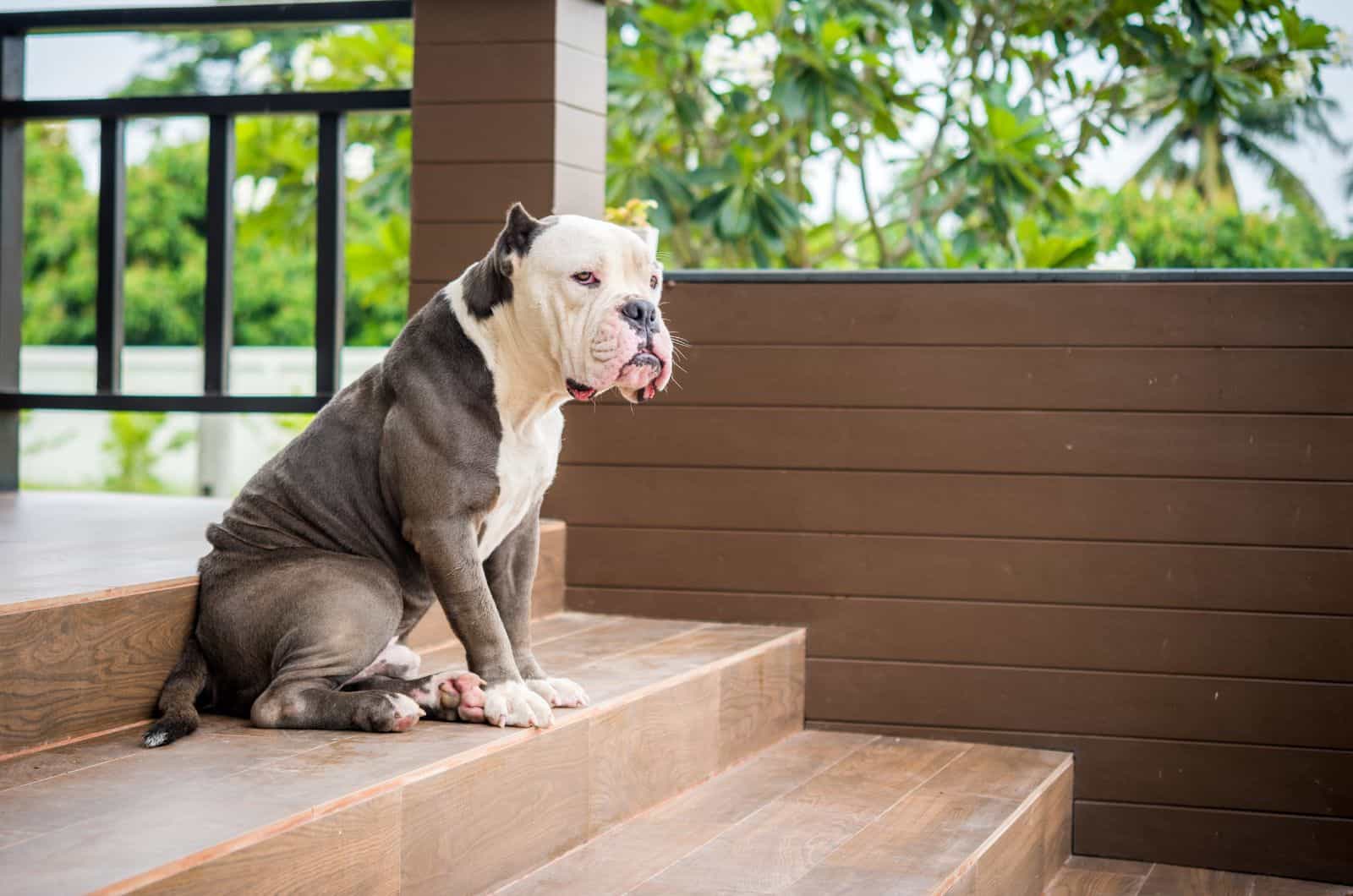
The razor edge pitbull bloodline was established for direct reasons: we want a friendly and family-oriented dog with the amazing looks of the American Pitbull Terrier.
Like all pitbull puppies, razor edge pits are born with natural friendliness, great intelligence, and a love for adventure and life.
The friendliness and mild temperament are special characteristics of the razor edge bloodline.
For these reasons, being a guard dog is not a good job for them.
But, we can say that the looks alone can be enough to scare off intruders.
As mentioned, in truth they are affectionate and gentle dogs. So, if an intruder does make its way to the property, some belly rubs are expected.
So, jokes aside, if you are looking for a guard dog, a better choice could be a German shepherd or an American bully.
What To Expect From A Razor Edge Pitbull?
With their friendly and calm nature and great intelligence, you can expect a loyal and great friend for a lifetime. They are good family pets, getting along with children of all ages.
This pitbull bloodline is perfect for people who are looking for a pitbull-looking dog but without the game dog’s temper characteristics.
The razor edge pits are affectionate and eager to please their owner.
Their mild tempers make them a good pet for both house and apartment, smaller or bigger living quarters.
Razor Edge Pitbull Health
The razor edge pitbulls don’t have a lot of health issues. They have been mixed with a lot of different dog breeds, allowing their genetic code to be diverse and less prone to lead to more serious illnesses.
But, certain health problems might occur, especially if a lot of inbreeding has been done for the sake of maintaining certain desirable physical traits.
The Most Common Health Issues:
• hip dysplasia
• heart disease
• cataracts
• allergies
• elbow dysplasia
Hip Dysplasia
A chronic condition affecting the hip joint. The head of the femur bone (thigh bone) doesn’t fit into the hip socket ( part of the pelvis bone structure ) and causes direct rubbing of the two mentioned bones.
This is very painful and it causes further degenerative hip problems. Because the razor edge pitbulls are muscular dog breeds with a lot of weight directed toward their hips, they are more prone to CHD ( canine hip dysplasia ).
Symptoms of hip dysplasia are:
• leg lameness ( the dog avoids using the affected leg )
• limping
• a bunny hop gait ( using both hind legs simultaneously to run or walk – hopping like a bunny )
• problems with going up and down the stairs
There is no cure for hip dysplasia, but noticing early symptoms and taking your dog to the vet in the early stages can improve the treatment and provide a longer and better life for your dog.
Heart Diseases
It can include a variety of heart problems, but the most common one in pitbull dogs is aortic stenosis. The aorta is a major blood vessel leading from the left chamber of the heart and its main goal is to disperse oxygenated blood from the heart to the body.
Aortic stenosis means the blood can’t go through the valve properly. Consequently, the oxygen can’t reach the body to its full potential, leaving the dog with the usual symptoms:
• shortness of breath
• easily fatigued
• fainting
But, in most cases, dogs do not show any signs of heart disease. Most of them are discovered in regular checkups when a veterinarian hears a heart murmur. A definitive diagnosis is made by X-rays, ECG, and by heart ultrasound.
Heart diseases can be treated with proper medications ( e.g. beta blockers – slowing down heart rates and allowing the heart to work more efficiently ) or with surgical procedures in more severe cases ( removing the tissue that causes the constriction via catheterization ).
Hypothyroidism
It is a disease where the thyroid gland doesn’t produce enough hormones which leads to common symptoms in dogs:
• loss of hair ( usually on the tail, back of the hind legs, and on the trunk )
• flaky skin
• thin coat
• black patches on the skin
• weight gain
• loss of muscles
• lethargy
It is important to distinguish between itchy, red, and flaky skin common to flea bites and allergies from flaky, non-reactive skin common in hypothyroidism.
Weight gain caused by hypothyroidism is unique because the dog has a loss of appetite, but gains weight. Lethargy ( inactivity, sluggishness ) causes loss of muscles, because of the overall inactivity.
The symptoms might be numerous but the disease is not life-threatening.
It can be successfully treated via proper medication – meaning your dog will have to take medicine orally for the rest of its life, but the drugs are not expensive and are easily attainable.
Hypothyroidism usually affects dogs between 4 and 10 years of age.
Cataract
It is a condition in which a cloudy film sets into the lens of the eye and stops the light from entering it. All eyes, both human and dog, have water and proteins in them. When the proteins cluster together, they form a cloudy film substance in the eye’s lens.
Cataracts can start small and grow bigger and cause blindness if not treated.
This stage can still be surgically treated, but if it’s left untouched then it can cause glaucoma – damage to the optic nerve caused by pressure. Nerve damage cannot be reversed and causes permanent blindness.
Not all cataracts lead to glaucoma. Some stay small in size and cause only slight changes in the dog’s eyesight.
Allergies
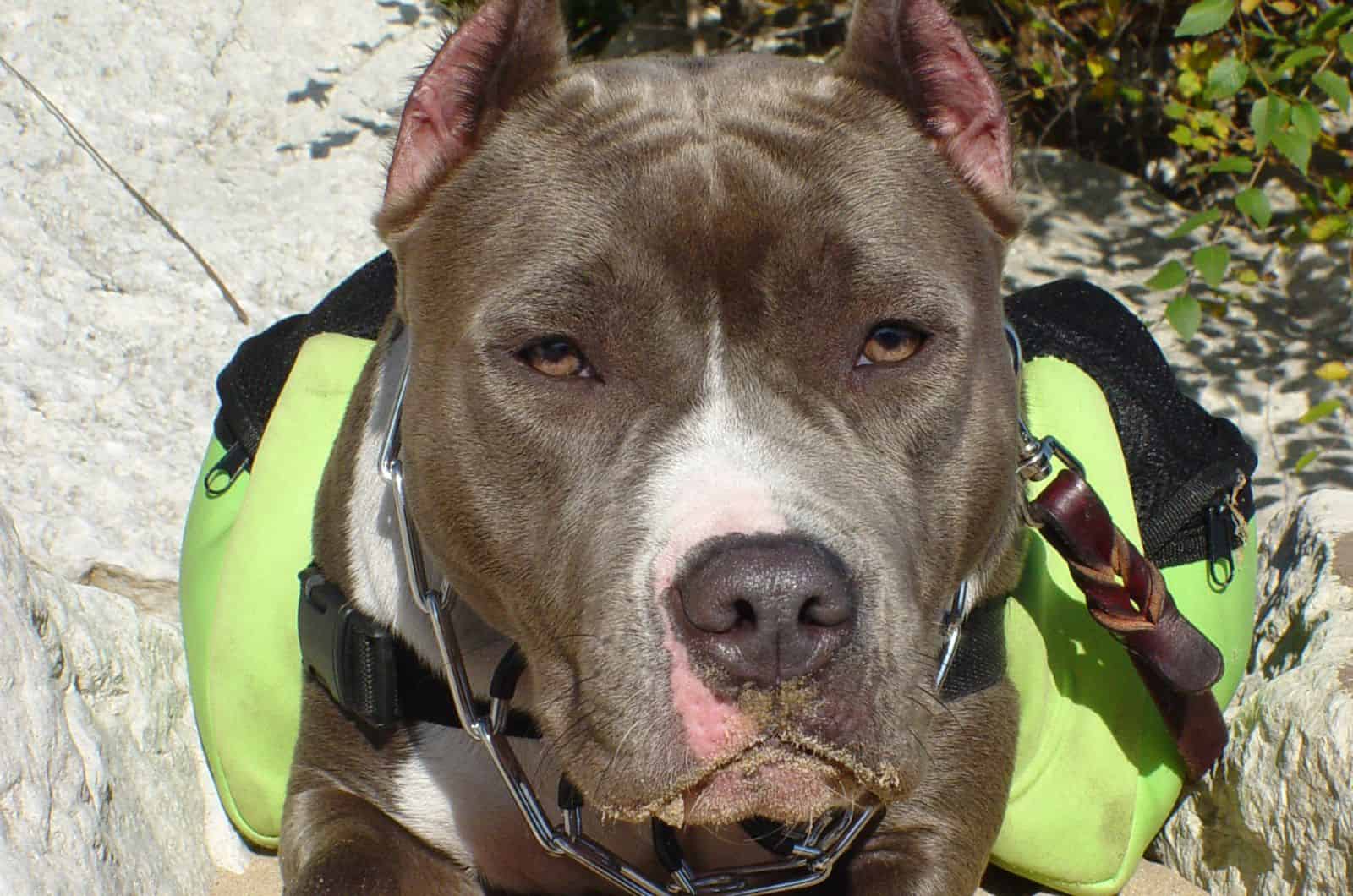
There are two most common allergy types in dogs: food and skin allergies.
Skin allergies are the more common of the two and the symptoms include:
• redness and inflammation of the skin
• itching
• swelling of the face or parts of it
• sneezing
• vomiting
• hives
• runny eyes
While these symptoms represent allergy problems, they can be a part of another disease as well, so it is best to take your dog to the vet when you notice them.
Once the correct diagnosis has been made, the treatment can start. The usual treatment includes avoiding substances that cause allergies.
The veterinarian can also prescribe allergy relief medicine for your dog to help with the itchiness or redness of the skin. The most commonly prescribed medicine is Benadryl ( diphenhydramine ).
You should never give human allergy medicine to a dog.
Always consult your veterinarian.
Muscular Dystrophy
This disease affects the muscles. It is an inherited disease that affects more male than female dogs.
First signs can be seen in the early stages of life, especially when the puppies are 3 to 5 months old.
The conditions of this disease get more serious over time.
The first sign is the same as for hip dysplasia – bunny hop movement.
Affected dogs lose muscle mass causing the bones to be more prominent, especially rib and spine bones.
They can also have problems with eating and drinking water because they can develop a condition called megaesophagus (the esophagus doesn’t work properly and is unable to move the food into the stomach) and because they can have very large tongues.
The diagnosis is made by a veterinarian through clinical appearance and blood analysis.
Muscular dystrophy cannot be treated. Some forms can be slowed down by using steroids, but the disease is fatal in many cases.
The dog that survives to adulthood should not be bred because the disease is passed down on generations.
The affected dog’s mother should not be bred anymore, as well, since she can be a carrier of the recessive gene responsible for the development of muscular dystrophy. Genetic testing can be used to determine the presence of the mentioned gene.
Elbow Dysplasia
Also known as CED ( Canine Elbow Dysplasia ) is a disease affecting the elbow joint.
The elbow joint is made of three bones and if they do not fit together properly due to weight distribution problems or growth issues in puppies, different developmental abnormalities can occur.
Similar to hip dysplasia, symptoms include lameness and pain.
Because elbow dysplasia often affects both elbow joints, it can be hard to notice it in the early stages, because the limping and the gait are symmetric.
First signs are often shown at a young age, starting from 5 months on.
If the razor edge pitbull puppies develop the disease in both elbow joints, one of the first symptoms could be an unwillingness to play or finish the simplest activity tasks, such as the usual walks.
As in hip dysplasia, a diagnosis of elbow dysplasia is made by a veterinarian through clinical examination and confirmed with x-rays.
The treatment is mostly surgical, but it depends on the severity of each case.
If it’s mild, your veterinarian can recommend treatment using the medicine.
Complete joint replacement is recommended when the conditions are too acute.
Proper Training Of Razor Edge Pitbull
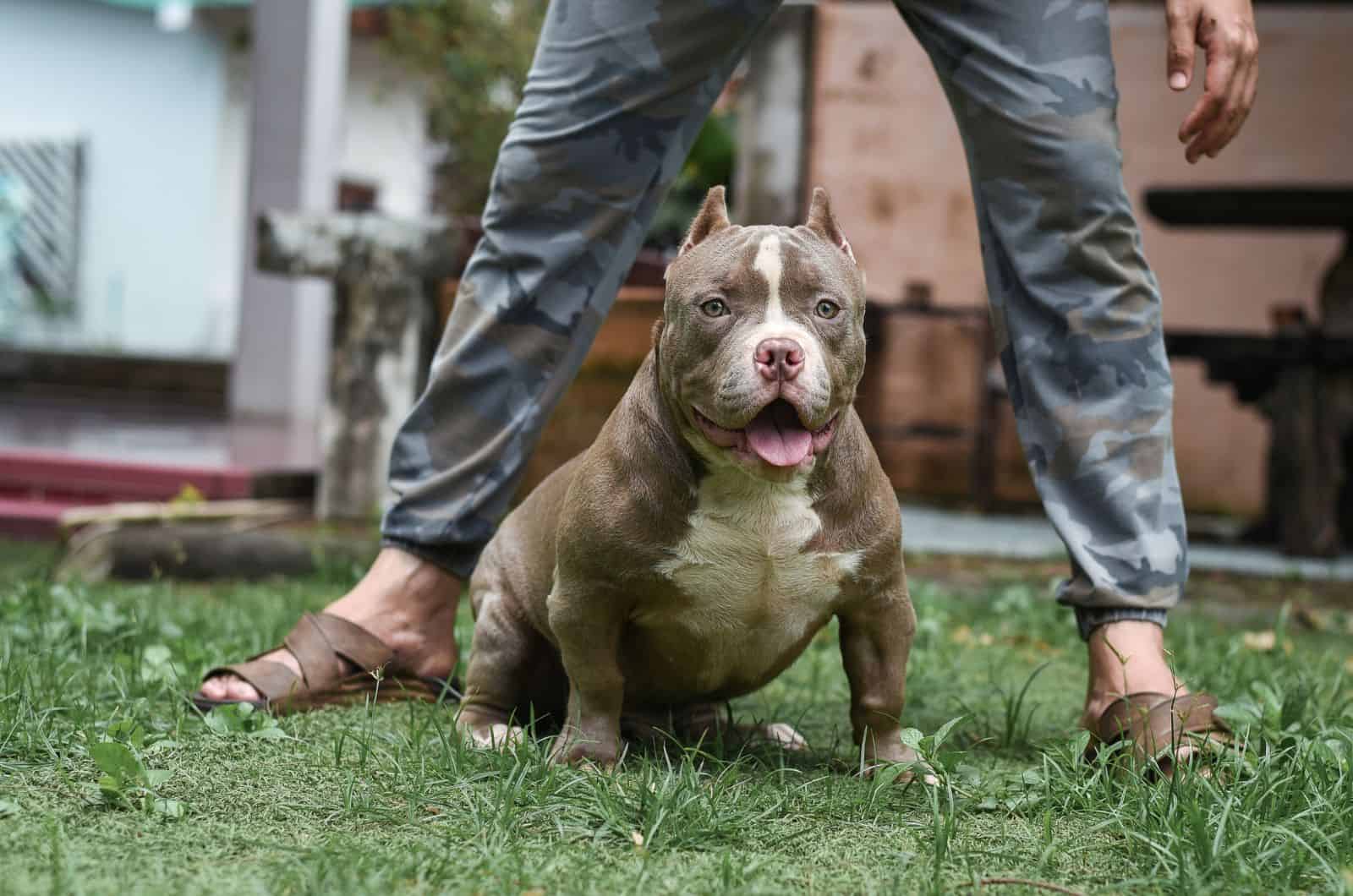
When it comes to training any dog breed, there are steps we have to follow in order to make our pittie a goody two shoes ( paws ).
Early Socialization
Any more experienced dog owner can confirm that socialization in the early stages can make a crucial difference in future dog training.
Early socialization time includes the period of the first 3 to 12 weeks of age.
This is called the socialization phase and it shapes the dog’s temperament and behavior. If properly done, it makes the dog calm, social, and relaxed in various life situations including connecting with other animals.
Putting a collar and a leash from a young age teaches a dog how to behave in outdoor situations, how to follow its owner, and how to react or not react at all to other dogs or animals.
It is also important to be firm and decisive when it comes to what your pitbull puppy can or cannot do. Being inconsistent and changing the rules often, can leave your dog confused which makes it harder to teach them proper behavior.
Positive Reinforcement
When we are teaching the dog the right behavior it is also very important to use positive reinforcement. Positive reinforcement is all about using treats as a reward.
Simply said, we teach the dogs that, if they behave in a certain, way they will be rewarded each time they do it.
A Professional Dog Trainer
A dog trainer is a great option when it comes to training any dog breed. They are certified professionals, so the desired training outcome is much easier to achieve.
Physical Activity
The razor edge pitbulls love to run around with their owners, just like any other dog breed. We can use their desire to have fun with the owners and teach them a thing or two about proper behavior.
Pitbulls are strong and athletic so giving them a lot of opportunities to be active can help you in your training process.
They love to please their owners and they are intelligent, so training your razor edge pit shouldn’t be a problem.
Also, their friendliness and kind nature help the training process, leaving both the pitbull dog and the owner happy and relaxed.
The Price Of Razor Edge Pitbull
Razor edge pitbulls don’t come cheap. They are in high demand and there are not many kennels offering a purebred.
Because of that, be prepared to pay at least $1500.
Some breeders sell their dogs for more than $30000, but the average price is around 5000 USD.
What makes them so pricy is their loving, friendly, and family-oriented nature as well as the high-quality breeding programs involved in this breed from the very start.
The original kennel owners made a lot of effort to make an outstanding dog breed with a lot of qualities and good overall health, so a high price is somewhat expected.
The Conclusion
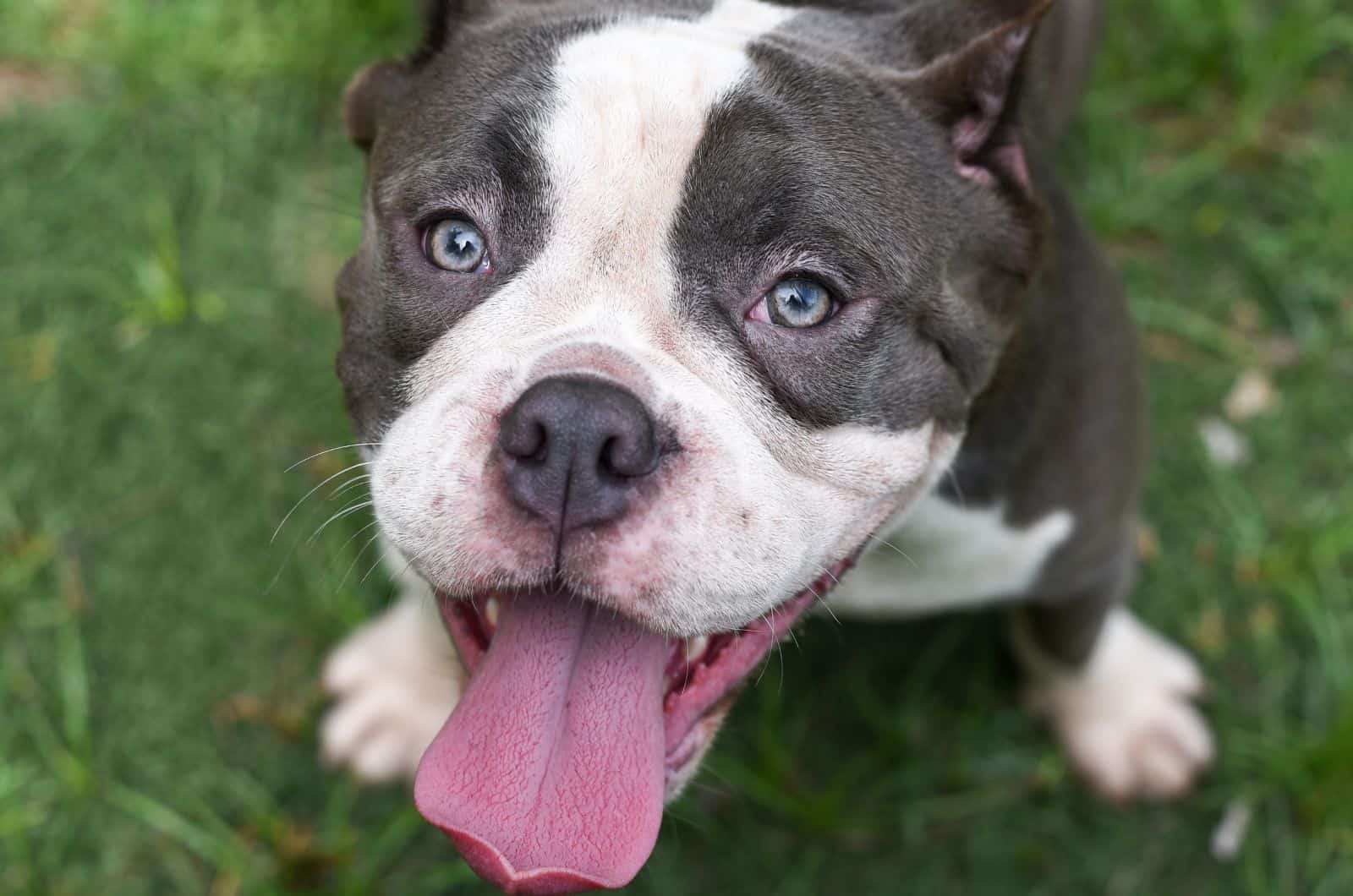
Razor edge pitbulls are a highly praised pitbull bloodline. They come from excellent purebred American pitbull terriers and respected old English dog breeds.
They are beautiful, strong dogs with a friendly and mild nature.
If you are:
• ready to give a large sum of money
• ready to have a best friend ( and your children are ready too )
• not looking for a guard dog, but one that still looks tough
• Looking for a healthy dog
Buying a Razor edge pitbull is the right decision.
Please, bear in mind that all dogs have their own personality and that they are not toys or passing fun.
They require affection, care, and a lot of patience and love.
Read Next: Champagne Pitbull – Is This The Most Beautiful Pitbull Color?
